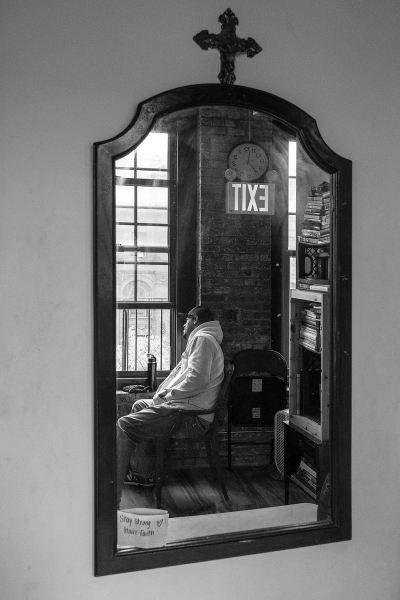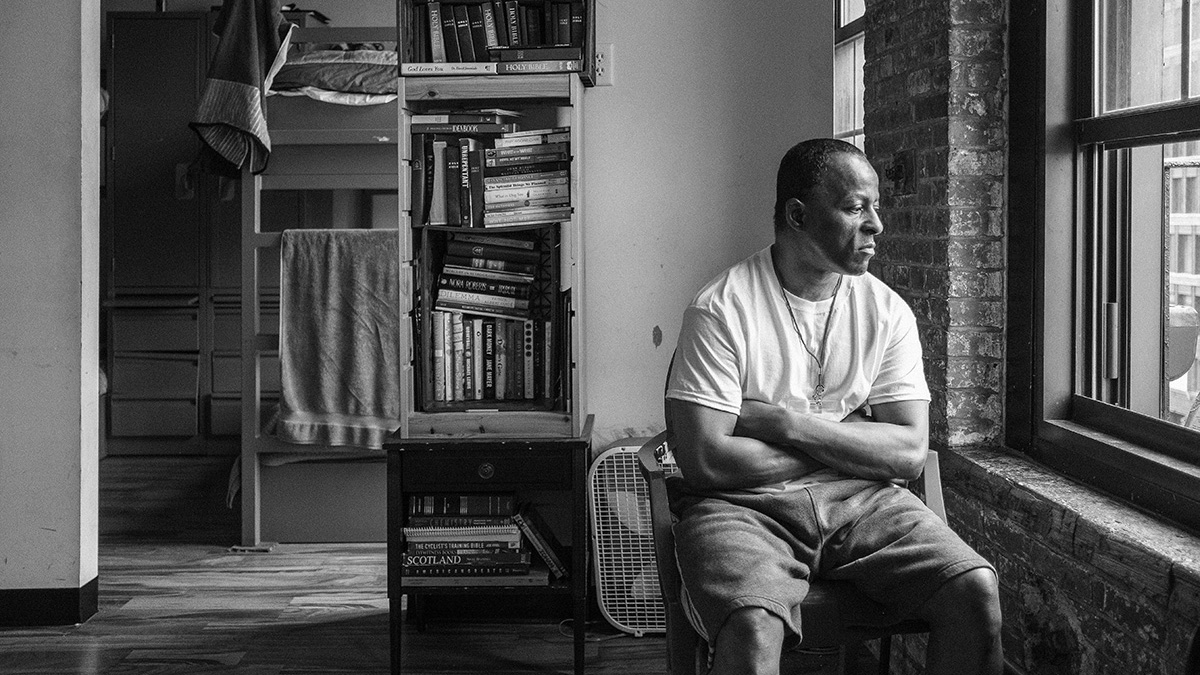Photographer Steve Fiehl documents New York City shelter life
Photographer Steve Fiehl is documenting life in New York City’s The Bowery Mission with portraits of residents.
• September 2019 issue
We see homeless people on the street but rarely do we learn their particular stories. Steve Fiehl’s personal project “Resilient Souls” gave him the opportunity to hear and share stories of these individuals via portraits and documentary photographs he made at New York City’s The Bowery Mission. The images, with quotes from the portrait subjects, were exhibited at the International Center of Photography in June.
The Bowery Mission often turns away photographers who ask to make images of its shelters, says Fiehl, because they spend only a few hours and “don’t go beyond the label ‘homeless.’” But Fiehl proposed spending several months on the project, coming in every couple of days. In the end, he spent a year making both portraits and documentary photographs.

The people who join The Bowery Mission’s residential recovery program live in dorms, receive career counseling, and attend self-help classes intended to transform attitudes and refine self-worth. The transformational journey takes a year and a half. Fiehl made portraits of some of the men in the program, a process that began with casual conversation over a meal, a request to make the portrait, and then a long recorded interview to get to know the subject’s story—all before Fiehl ever took out his camera. Building trust is essential to making authentic portraits, he says. There’s a different gaze in the person’s eyes when they feel connected to the photographer.
“I heard such crazy stories,” Fiehl says. His first portrait subject said he’d left home at 13, joined a gang, became a drug dealer, and spent time in jail before becoming homeless and finding The Bowery Mission’s residential program. “This person was so kind, so generous, and so strong because he had been through so many things,” according to Fiehl. “I felt I had to witness that and show their soul.”
One challenge of the project, says Fiehl, is knowing when to take a photo and when to put the camera down. “Sometimes I saw things that I didn’t take a picture of.” Another issue: Some subjects agreed to a portrait only to bail out when it was time to sign the consent form. When one subject asked that his portrait be destroyed, Fiehl, of course, obliged. He understood the man’s position. Sometimes photographers don’t consider that a portrait sitting is a collaboration: “When you like a picture you took, it becomes your picture. But it’s also theirs.”
Amanda Arnold is the associate editor of Professional Photographer.


 View Gallery
View Gallery


